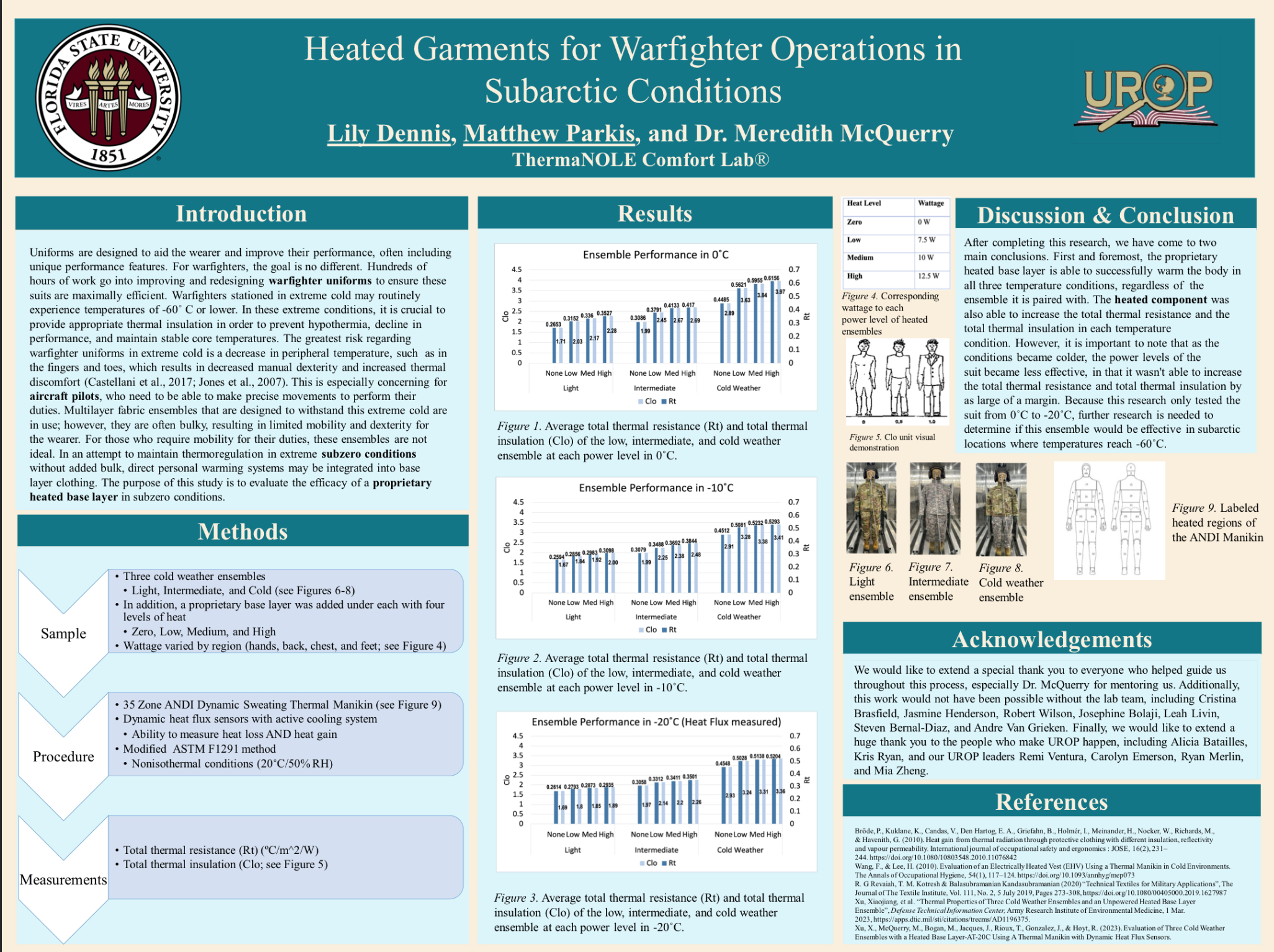Research Symposium
24th annual Undergraduate Research Symposium, April 3, 2024
Matthew Parkis Poster Session 3: 1:30 pm - 2:30 pm/120

BIO
Hi, my name is Matthew Parkis and I am from winter Park, Florida. I am currently a pre-med student here at Florida State majoring in IMS: Clinical Professions. After completing my undergraduate degree, I hope to attend medical school and specialize in dermatology, sports medicine, or aerospace medicine! Along with being interested in housing I am also passionate about student advocacy within housing here at FSU. As the current president of my dorm hall council as well as a resident assistant for the 2024-2025 academic year. Coming into FSU I knew I was interested in doing research and am fortunate enough to have had the opportunity to do so with the guidance of Dr. Meredith McQuerry. The research project I worked on for UROP, focused on the evaluation of the performance of warfighter personal protective equipment in Subartic conditions. This is important to me as it helps me not only develop my research and professional skills but also helps me get involved into a field of study I wish to pursue later on in life. I cannot thank Dr. McQuerry and the entire ThermaNOLE Comfort Lab team enough for providing me this opportunity here at Florida State!
Heated Garments for Warfighter Operations in Subarctic Conditions
Authors: Matthew Parkis, Dr. Meredith McQuerryStudent Major: Interdisciplinary Medical Sciences: Clinical Professions
Mentor: Dr. Meredith McQuerry
Mentor's Department: Textile Testing & Performance Measurement Mentor's College: Jim Moran College of Entrepreneurship Co-Presenters: Lily Dennis
Abstract
Warfighters are often required to endure extreme cold temperatures, regularly reaching -60˚C. These conditions can be strenuous, if not dangerous, to the body and can impact performance. Adequate protection in subzero conditions is often achieved via multiple fabric and garment layers, however, the mobility of the wearer is often negatively impacted. This makes it more difficult for warfighters to make precise motions during combat, especially concerning extremities like finger dexterity, which is vital for pilots or other personnel that require delicate and precise movements. Therefore, the purpose of this research was to determine the ability of a proprietary heated base layer system to maintain thermal insulation when wearing cold weather warfighter ensembles in subzero conditions (0 ˚C, -10˚C, -20˚C). Three warfighter combat uniforms (light, intermediate, and cold) were assessed utilizing an ANDI dynamic sweating thermal manikin, in the ThermaNOLE Comfort Lab® at Florida State University to measure thermal insulation. Each uniform was assessed in conjunction with a proprietary heated base layer system at three temperatures and four power levels (no heat, low, medium, and high) to determine the efficacy of maintaining thermoregulation without excessive clothing bulk. Results indicate the heated base layer maintained and, in some cases, significantly increased, the thermal insulation and surface temperature of the manikin, especially in the lower temperature conditions (0 ˚C and -10 ˚C). At -20 ˚C, temperatures were significantly enhanced at the medium and high-power levels. Future research should investigate how to hone each power level as to maintain the thermal insulation the best.
Keywords: Warfighter operations, Subarctic, equipment


